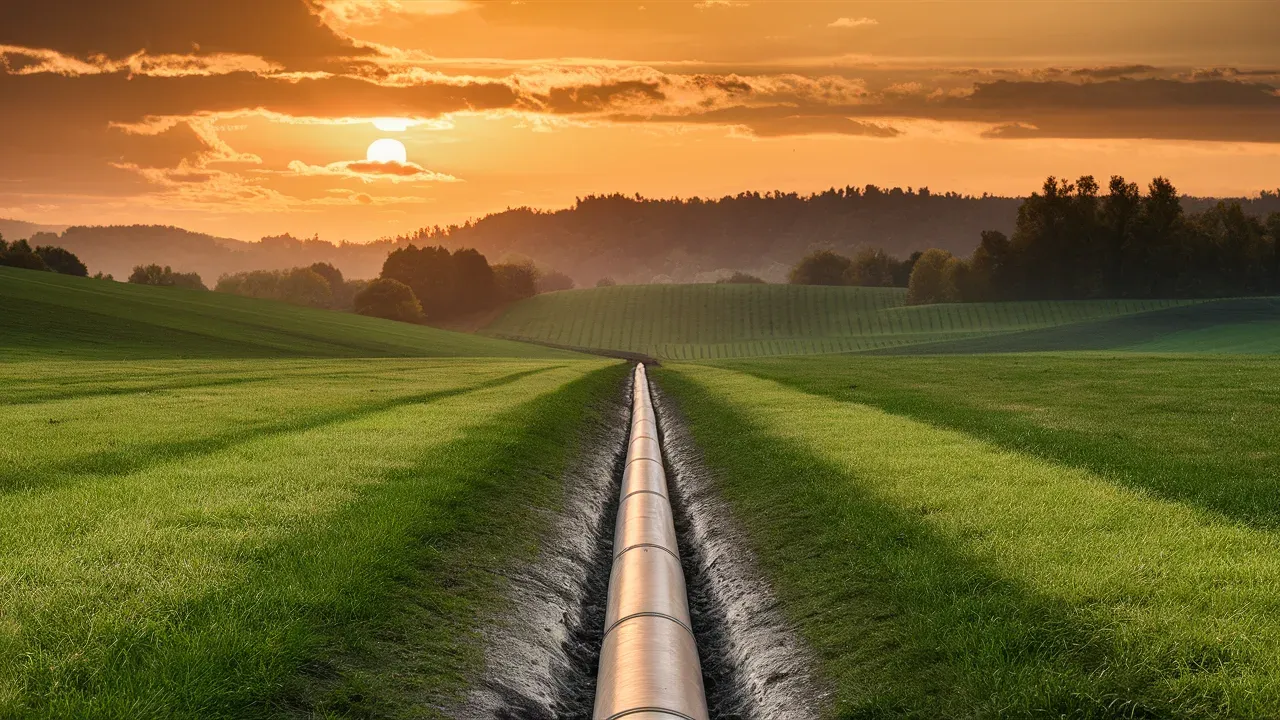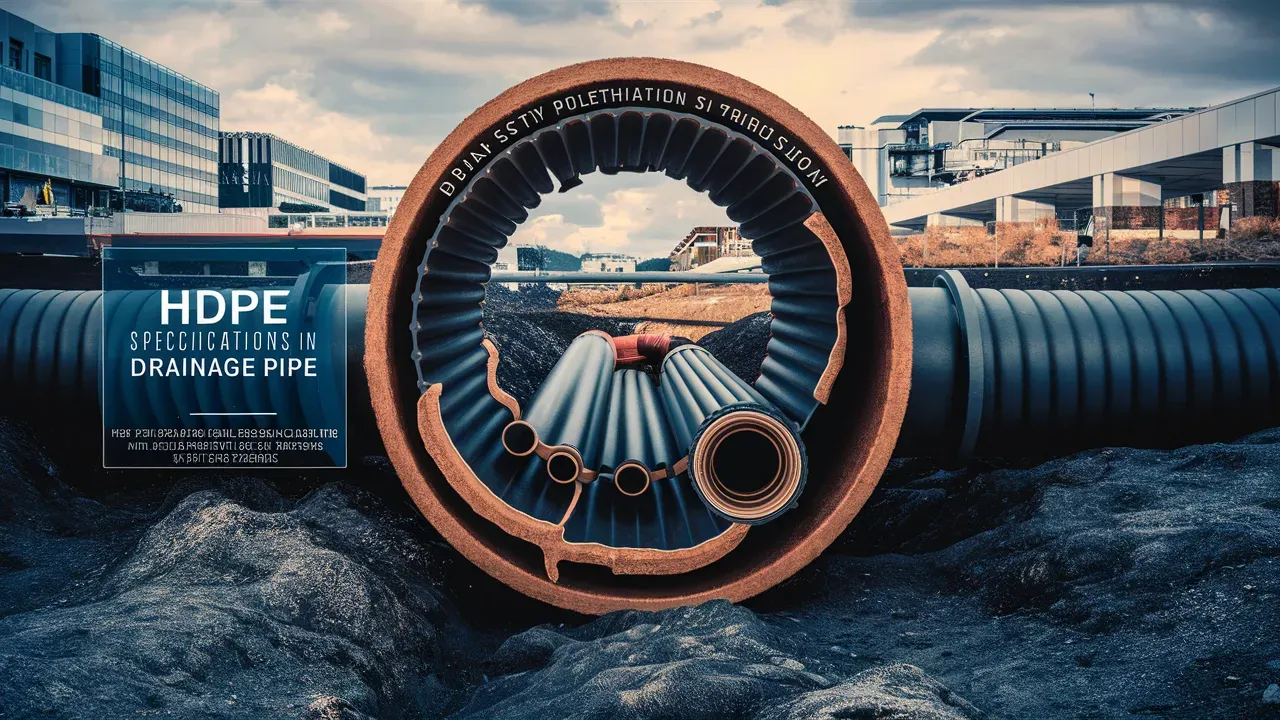Discover the pinnacle of High-Density Polyethylene (HDPE) drainage pipes in 2024 with a comprehensive overview of specifications. From the significance of HDPE pipes in managing various drainage systems to the types available, delve into the nuances of single-wall, double-wall, and corrugated options. Learn about critical specifications like diameter, material quality, and jointing systems, and gain insights into diagnosing issues, treatment options, and preventive measures. Real-life case studies and expert perspectives enrich this exploration, offering a holistic understanding of HDPE drainage pipe technology.
The Best 2024 HDPE Specifications in Drainage Pipe

Introduction HDPE specifications in the drainage pipe
In this article, we delve into the specifications of High-Density Polyethylene (HDPE) drainage pipes, focusing on the best options available in 2024. HDPE pipes are renowned for their durability, flexibility, and resistance to corrosion, making them a popular choice for various drainage applications.
Define the Importance of HDPE Drainage Pipes
HDPE drainage pipes play a crucial role in efficiently managing stormwater, wastewater, and other drainage systems. Their resilience to environmental factors and long-term durability make them an ideal solution for diverse construction projects.
Types and Categories of HDPE Drainage Pipes
HDPE drainage pipes come in various types and categories to suit different applications and project requirements. These include single-wall, double-wall, and corrugated HDPE pipes, each offering unique benefits and specifications.
Single-Wall HDPE Pipes
Single-wall HDPE pipes are commonly used for residential drainage systems and agricultural applications. They are lightweight, easy to install, and cost-effective, making them a preferred choice for smaller-scale projects.
Double-Wall HDPE Pipes
Double-wall HDPE pipes feature an additional layer of protection, enhancing their strength and durability. These pipes are suitable for high-pressure applications and underground installations where added reinforcement is required.
Corrugated HDPE Pipes
Corrugated HDPE pipes are designed with a corrugated exterior for increased structural integrity and flexibility. They are commonly used in larger-scale drainage projects, such as highway drainage and stormwater management systems.
Specifications of HDPE Drainage Pipes
The specifications of HDPE drainage pipes vary depending on factors such as diameter, length, material quality, and stiffness. Understanding these specifications is essential for selecting the most suitable pipes for specific projects.
Diameter and Length
HDPE drainage pipes are available in various diameters and lengths to accommodate different flow rates and installation requirements. Common diameters range from 4 inches to 60 inches, with lengths typically ranging from 10 feet to 40 feet.
Material Quality
The quality of HDPE material used in drainage pipes significantly impacts their performance and longevity. High-quality HDPE resin with superior chemical and physical properties ensures excellent resistance to corrosion, abrasion, and environmental stress cracking.
Pipe Stiffness
Pipe stiffness refers to the ability of an HDPE pipe to withstand external loads and pressure without deformation. Stiffer pipes are suitable for applications where higher structural integrity and support are required, such as deep burial or heavy traffic areas.
Jointing System
The jointing system used in HDPE drainage pipes plays a critical role in ensuring leak-free connections and system integrity. Common jointing methods include heat fusion, mechanical couplings, and electrofusion, each offering specific advantages in terms of ease of installation and long-term performance.
Symptoms and Signs of HDPE Drainage Pipe Issues
Identifying symptoms and signs of potential HDPE drainage pipe issues is essential for timely maintenance and repair to prevent costly damage and system failure.
Common Symptoms
Common symptoms of HDPE drainage pipe issues include leaks, cracks, deformation, and reduced flow capacity. These symptoms may indicate structural damage, material degradation, or improper installation practices.
Signs of Degradation
Signs of HDPE pipe degradation include discolouration, brittleness, and surface roughness. These indicators suggest deterioration of the material properties due to prolonged exposure to environmental factors or chemical degradation.
Inspection and Maintenance
Regular inspection and maintenance of HDPE drainage pipes are crucial for detecting early signs of deterioration and addressing issues promptly. Visual inspection, pressure testing, and non-destructive evaluation techniques can help assess the condition of the pipes and identify potential defects.
Causes and Risk Factors for HDPE Drainage Pipe Failures
Understanding the causes and risk factors for HDPE drainage pipe failures is essential for implementing preventive measures and ensuring long-term system performance.
Environmental Factors
Exposure to harsh environmental conditions, such as UV radiation, extreme temperatures, and chemical exposure, can accelerate the degradation of HDPE pipes and compromise their structural integrity.
Installation Practices
Improper installation practices, such as inadequate bedding and backfilling, excessive loading, and improper jointing techniques, can lead to premature failure of HDPE drainage pipes. Ensuring proper installation procedures and adherence to industry standards is essential for mitigating risks.
Material Quality Issues
Poor-quality HDPE resin or manufacturing defects can result in substandard pipes with reduced performance and durability. Selecting reputable manufacturers and suppliers and conducting quality assurance checks are essential for ensuring the integrity of HDPE drainage systems.
Diagnosis and Testing Methods for HDPE Drainage Pipes
Various diagnostic tools and testing methods are available for assessing the condition and performance of HDPE drainage pipes.
Visual Inspection
Visual inspection involves visually assessing the external and internal surfaces of HDPE pipes for signs of damage, degradation, or defects. It is a simple and cost-effective method for identifying visible issues and abnormalities.
Non-Destructive Testing (NDT)
Non-destructive testing techniques, such as ultrasonic testing, radiographic testing, and magnetic particle testing, can provide detailed insights into the structural integrity and condition of HDPE pipes without causing damage to the material.
Pressure Testing
Pressure testing involves subjecting HDPE pipes to internal or external pressure to evaluate their resistance to leakage and deformation under load. It helps verify the integrity of pipe joints and detect potential defects or weaknesses.
Treatment Options for HDPE Drainage Pipe Issues
Treatment options for HDPE drainage pipe issues depend on the nature and severity of the problem, ranging from minor repairs to complete replacement.
Repair Techniques
Minor issues such as small leaks, cracks, or surface damage can often be repaired using various techniques, including heat fusion welding, patching, and sealing. These repair methods restore the integrity of the pipes and extend their service life.
Rehabilitation Methods
For more significant damage or deterioration, rehabilitation methods such as pipelining, slip lining, or pipe bursting may be employed to restore or reinforce the structural integrity of HDPE drainage pipes without the need for complete replacement.
Replacement Strategies
In cases of severe damage, degradation, or obsolescence, complete replacement of HDPE drainage pipes may be necessary to ensure long-term reliability and performance. Proper planning, preparation, and execution are essential for successful pipe replacement projects.
Preventive Measures for Maintaining HDPE Drainage Systems
Implementing preventive measures is crucial for maintaining the performance and longevity of HDPE drainage systems and minimizing the risk of failures and costly repairs.
Regular Inspection and Maintenance
Scheduled inspection and maintenance programs help detect potential issues early and address them before they escalate into more significant problems. Routine cleaning, debris removal, and vegetation management are essential maintenance tasks for preserving system functionality.
Proper Installation Practices
Ensuring proper installation practices, including adequate bedding and backfilling, proper jointing techniques, and adherence to manufacturer guidelines and industry standards, is essential for preventing installation-related issues and ensuring long-term system integrity.
Environmental Protection
Implementing measures to protect HDPE drainage pipes from environmental hazards such as UV radiation, chemical exposure, and extreme temperatures helps mitigate degradation and prolong the service life of the pipes. Using protective coatings, wraps, or enclosures can provide additional protection against environmental factors.
Personal Stories or Case Studies Highlighting HDPE Drainage Pipe Successes
Real-life examples and case studies demonstrate the effectiveness and benefits of using HDPE drainage pipes in various applications and environments.
Urban Drainage Systems
In urban areas prone to flooding and stormwater runoff, HDPE drainage pipes have been instrumental in improving drainage efficiency and reducing the risk of property damage and infrastructure failure. Case studies of successful urban drainage projects showcase the versatility and reliability of HDPE pipes in mitigating flood risks and enhancing resilience.
Agricultural Drainage
In agricultural settings, proper drainage is essential for soil health, crop productivity, and farm operations. HDPE drainage pipes offer a cost-effective and sustainable solution for managing excess water and preventing soil erosion, improving agricultural yields and profitability. Case studies of agricultural drainage projects illustrate the positive impact of HDPE pipes on farm productivity and sustainability.
Industrial Applications
In industrial facilities and manufacturing plants, efficient wastewater management is critical for regulatory compliance and environmental stewardship. HDPE drainage pipes are widely used in industrial applications for their chemical resistance, durability, and versatility. Case studies of industrial drainage projects highlight the suitability of HDPE pipes for handling corrosive and abrasive fluids and demonstrate their long-term performance in demanding environments.
Expert Insights on HDPE Drainage Pipe Technology
Expert insights from industry professionals and engineers provide valuable perspectives on the latest developments and advancements in HDPE drainage pipe technology.
Engineering Perspectives
Civil engineers and construction professionals offer insights into the design, specification, and installation of HDPE drainage systems, sharing best practices and lessons learned from real-world projects.
Material Science Expertise
Materials engineers and scientists provide technical insights into the composition, properties, and performance of HDPE materials used in drainage pipes, discussing innovations in resin formulations, additives, and manufacturing processes.
Environmental Considerations
Environmental experts and sustainability advocates discuss the ecological impact of HDPE drainage pipes and the role of sustainable practices in reducing environmental footprint and promoting circular economy principles.

Conclusion
In conclusion, the best 2024 HDPE specifications in drainage pipes are characterized by superior material quality, advanced manufacturing processes, and innovative design features. By understanding the key specifications, causes of failure, diagnostic methods, treatment options, and preventive measures, stakeholders can make informed decisions and ensure the long-term reliability and performance of HDPE drainage systems.
FAQs (Frequently Asked Questions) About HDPE specifications in drainage pipe
Q1: What are HDPE drainage pipes used for?
HDPE drainage pipes are commonly used for efficiently managing stormwater, wastewater, and other drainage systems due to their durability and resistance to corrosion.
Q2: How do I choose the right HDPE drainage pipes for my project?
When selecting HDPE drainage pipes, consider factors such as diameter, length, material quality, and stiffness to ensure they meet the specific requirements of your project.
Q3: What are the common signs of HDPE drainage pipe issues?
Common signs of HDPE drainage pipe issues include leaks, cracks, deformation, reduced flow capacity, discolouration, and brittleness.
Q4: How can I prevent HDPE drainage pipe failures?
Implement preventive measures such as regular inspection and maintenance, proper installation practices, and environmental protection to minimize the risk of HDPE drainage pipe failures.
Q5: Where can I find more information about HDPE drainage pipes?
For more information about HDPE drainage pipes and other related topics, consider accessing our lifetime prompt library or contacting us for personalized assistance.

